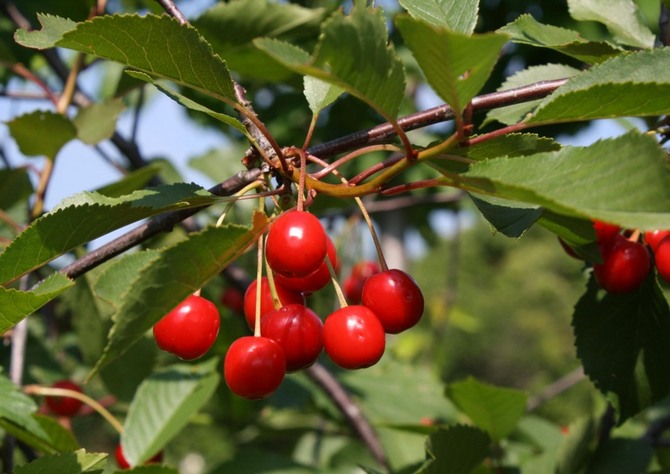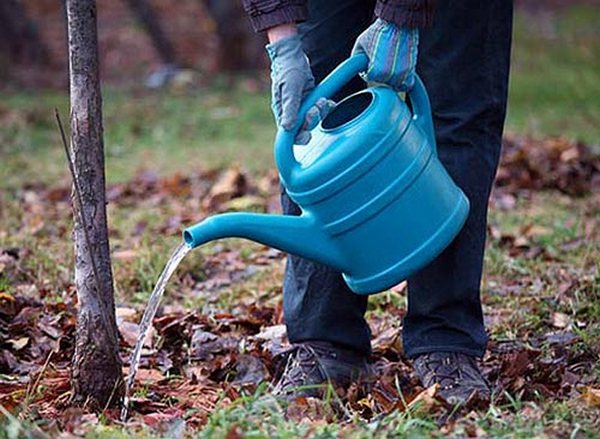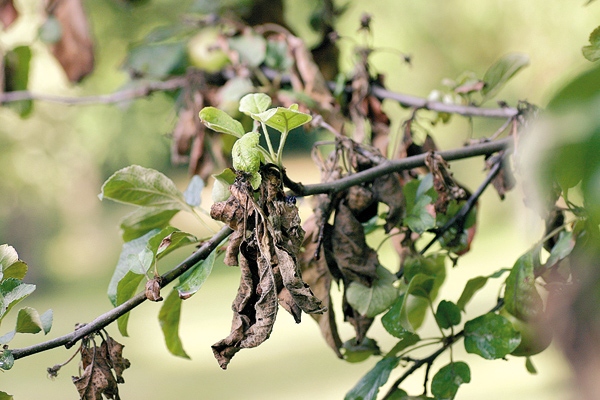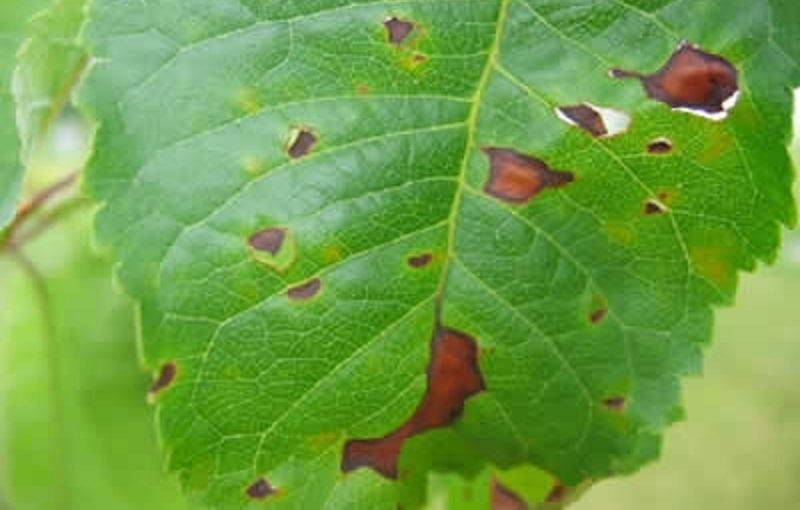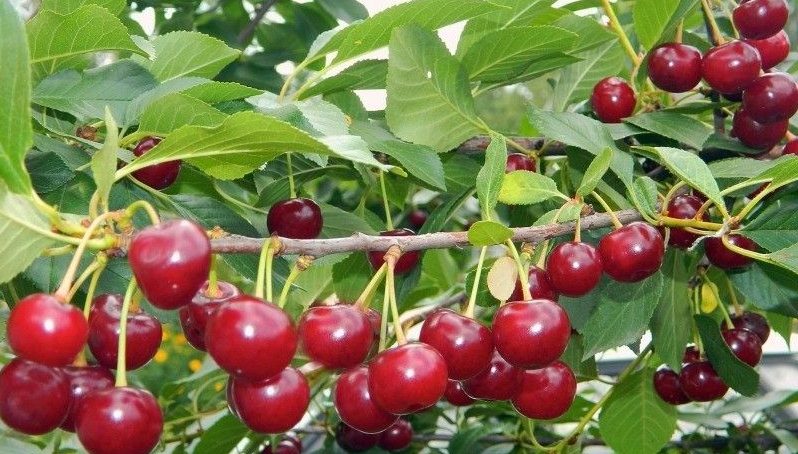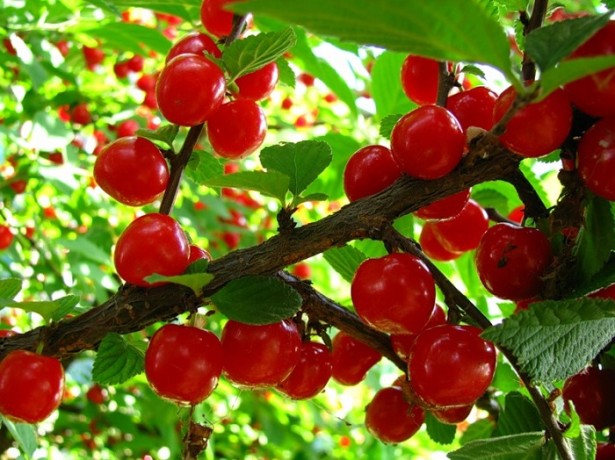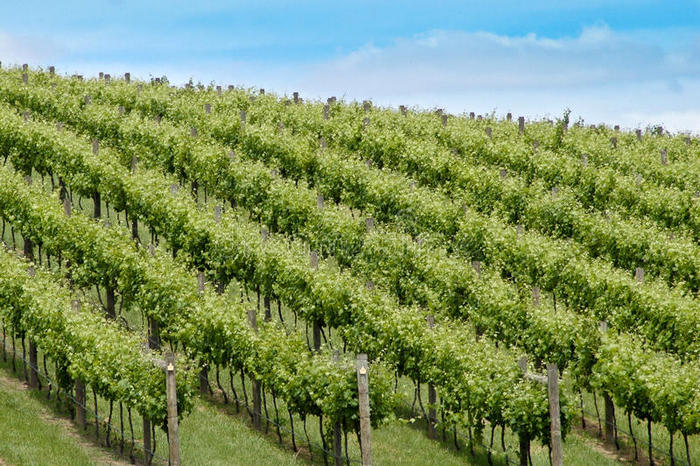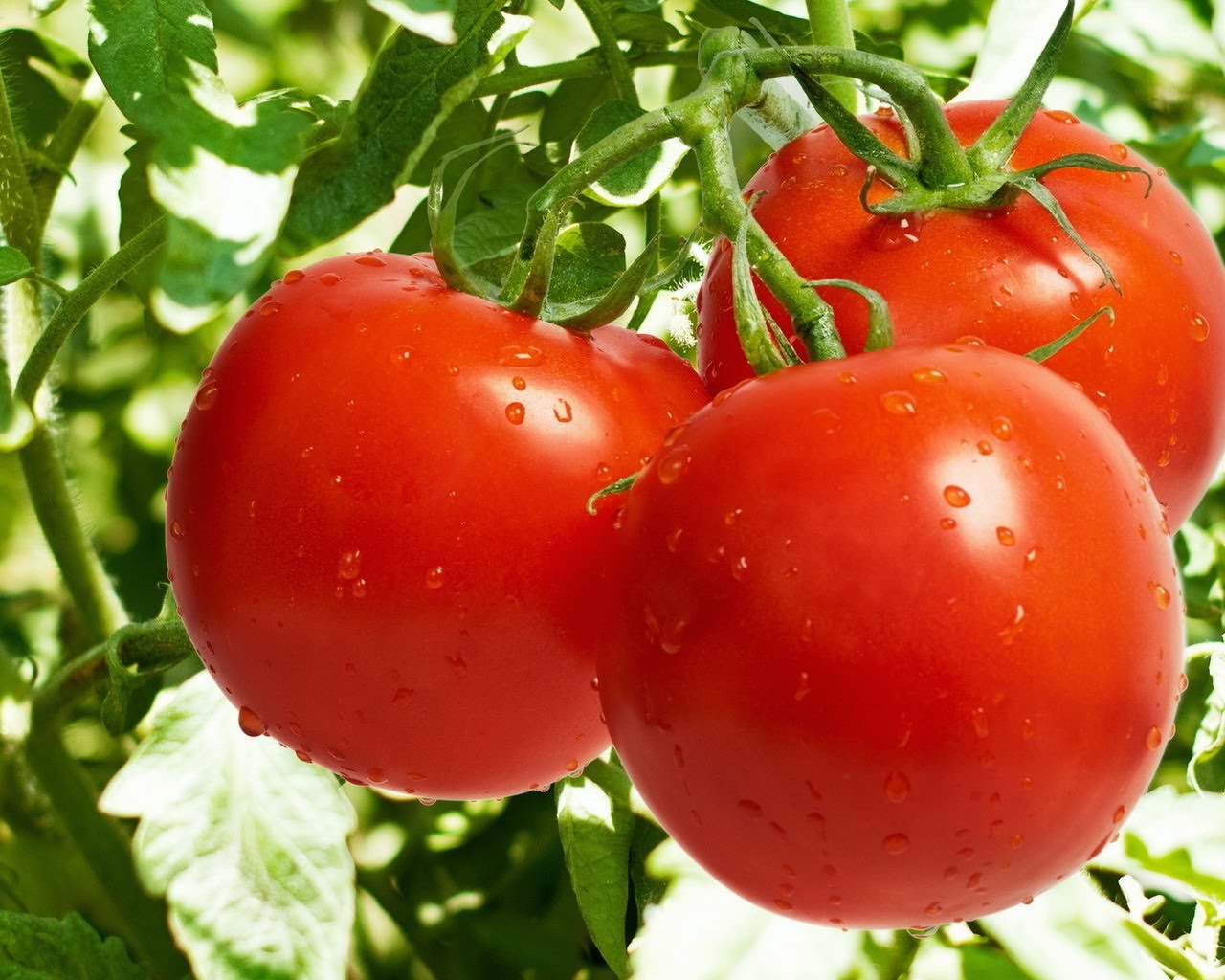Content:
Cherry growing is a popular activity among gardeners. It is used in many culinary recipes and is loved for its beneficial properties and the sweet taste of berries. The tree is prone to various diseases, so you need to be aware of why cherry branches dry after flowering. It is worth figuring out how dangerous this ailment is and how to deal with it.
General information about cherries
Cherries are one of the most commonly grown fruit crops. She belongs to the Plum family. The tree grows about 3 m long. The crown is dense, oval in shape. Sometimes it grows in the form of a bush. The shape of the leaves is oval, with small teeth, the color is dark green, the size is 5 cm.
Flowers are white, have five petals, size 2.5 cm. Cherry berries are oval in shape and red in various shades (from light pink to black).
Cherry varieties are divided into several types, depending on the ripening period of the berries:
Early (ripening of berries in mid-June):
- Vladimirskaya: grows up to 2 m long, it takes about two months from flowering to the appearance of berries, the berries taste sweet and sour, weighing up to 3.5 g, the pulp is juicy, burgundy-red;
- Bagryanka: a low-growing tree up to 2 m long, capable of wintering well, the fruits are dark red in color and weigh more than 3 g, the fruits taste sweet and sour, the pulp is juicy;
- Bulatnikovskaya: yields a harvest for 3-4 years after planting, grows up to 3 m in length, oval leaves are dark green, grows in the inflorescence from 4 to 6 flowers, fruits are dark red, weighing about 3 g. The peel of the berries is dense, and the pulp is juicy.
Medium early (ripening of berries in July):
- Cinderella: berry weight about 4 g, color - light red, shape - rounded. The fruit tastes sweet and sour. Winter hardy;
- Surprise: large berries weighing about 6 g. The color of the fruit is bright red, and the taste is sweet and sour. It can yield up to 15 kg of berries. Frost-resistant variety;
- Zagoryevskaya: the fruits weigh about 4.5 g, have a sweet and sour taste. Can easily tolerate frost. Up to 15 kg of berries are harvested from the tree;
- Anthracite: the berries are round and burgundy-black in color. The weight of the fruit is about 4 g, and the taste is sweet and sour. Frost-resistant variety.
Late ripening of berries (late July - early August):
- Lot: the height of the tree is 2.5 m, the leaves are dark green in color, the berries are dark red in weight up to 4 g, the taste of the fruits is sour, the shape of the berries is round;
- Lyubskaya: the fruits are sour, more suitable for jam, the weight of the berries is up to 4 g, the fruits are oval in shape, good winter hardiness of the variety, the leaves are dark green;
- Ruby: a shrub about 1.5 m high, up to 7 kg of berries can be harvested from one bush, fruits are round, weighing up to 4 g, dark red;
- Shakirovskaya: the weight of berries is up to 5 g, the color is dark red, the fruits are juicy, sweet and sour in taste, the variety is resistant to frost.
Fruits of all varieties of cherries have many beneficial substances for the body. They include trace elements such as iron, chromium, sulfur, potassium, etc.
Why do cherry leaves and branches dry?
A variety of circumstances affect the health of a cherry tree. The main factor is climatic conditions.The greatest risk of contracting a fungal infection exists in those regions that are characterized by dampness. The leaves and branches of the tree begin to dry from the influence of pathogens.
The following reasons contribute to the development of the disease:
- the seedling is planted to a great depth;
- too abundant watering;
- in the near-trunk circle, manure or compost was used for feeding.
Particular attention must be paid to the flowering intensity. If the cherry is growing too vigorously, this may be a sign of hidden damage (wounds, rot on the root system).
The most common causes of leaf and twigs drying out are fungal diseases. Harmful microorganisms can enter the plant through the flower. Plants infected in the vicinity can be a source of disease.
Fungal diseases
In the spring, when there is a lot of dampness, the development of the fungus begins, as a result, the tree begins to ache. The branches become dry and the leaves may turn yellow and curl.
There are two main fungal infections that affect cherry leaves and branches: coccomycosis and monoliosis.
Moniliosis
The disease is the main reason why cherry leaves and twigs dry out. All stone fruits are susceptible to this disease. Symptoms are already visible in June.
The main signs of the disease:
- flowers wither and dry;
- leaves turn black;
- shoots darken strongly;
- young branches begin to dry out.
The spread of the disease can go through the trapped spores of the fungus on the stigmas of the pistils. The most prone to this disease are the varieties Lyubskaya, Vladimirskaya, Felt. Have immunity: Shpanka, Krasnokutskaya, Anadolskaya.
The disease has two forms:
- Monilial burn... When the winter is warm, the first signs of the disease begin to appear in the spring. This ailment is the reason why cherry leaves have dried up after flowering. The infection spreads to young shoots, flowers and twigs. Pathogens enter the wood through the stigmas of the pistils and destroy it from the inside. The tips of young shoots dry out. After a certain period of time, the access of moisture to the tree stops, the branches begin to dry out from the end. When the cherry blossoms, it is no longer possible to save the tree. Sometimes resin is released, which flows down the branches and forms hard, dense balls. This process is called gum flow.
- Gray rot - is the reason why cherries dried up this year. The fungus enters the tree through wounds caused by mechanical stress or from insects. The berries turn black, spots appear on them, as well as sporulation pads, which are arranged in circles. A distinctive feature of this type of fungus is the chaotic arrangement of the formations. The fruits become wrinkled and gradually dry out.
Gardeners are faced with the question of what to do if the cherry has dried up. This ailment spreads very quickly, and therefore the procedures must be carried out on all plants.
The following remedies should be used for treatment:
- Cupid: Apply after flowering when the leaves and flowers are dry. Used maximum 1 time per week.
- Bordeaux mixture: the plant is processed during the growing season.
- But: it is used when a flowering tree dries up. This drug is used only in conjunction with other fungicides.
- Abiga Peak: processing is carried out in the same period.
- Cuproxat: Used when the buds have opened. Processing is carried out at intervals of 10 days.
Coccomycosis
This ailment also refers to fungal infections and is the answer to the question of why cherry leaves turn yellow and fall off.The development of the fungus occurs in warm weather, with high humidity. The fungus of this species quickly spreads through all trees.
One of the features of the disease is that there are no manifestations in the early years. You can tell if a tree is infected by the fact that the leaves fall too early.
Due to this type of fungus, the tree loses its resistance to severe frosts. Cracks appear in the bark and kidneys weaken. Without treatment, the berries will dry out and the harvest will be poor. The most susceptible to disease are varieties such as Lyubskaya and Vladimirskaya. Have immunity: Same age, Kharitonovskaya, Student, Shokoladnitsa.
Treatment should be carried out immediately after the first signs appear. Events are held in several stages:
- in the spring, before the buds swell (garden whitewash);
- before the tree blooms (Bordeaux liquid, Skor, Horus);
- after picking berries (fungicides are used);
- in the fall.
Timely treatment measures taken will avoid the death of the plant.
Timely pruning
The reason why cherries have dried up after winter is that in winter the fungus is found in diseased branches. In the spring, sporulation pads appear on them. Through humidified air, the fungus penetrates through wounds in the bark. To prevent the disease from spreading through the tree, all dry branches are pruned in the spring. The fungus is also found in diseased berries, therefore, if the fruit is dry, it should be removed.
Preventive measures
It is easier to prevent the disease by taking preventive measures, as well as taking timely care of the tree. Care includes:
- moderate watering;
- loosening;
- weed removal;
- top dressing.
The following preventive procedures should be carried out against the fungus:
- The Bordeaux liquid is used to treat the tree and the trunk circle. It is used as soon as the snow melts.
- Before flowering and during the growing season, the cherry is sprayed with "Horus".
- Spray on the cherry dome with a solution of copper sulfate.
Other diseases
Other common cherry diseases include:
- Clasterosporium: red spots appear on the leaves, which increase in diameter. Then the spots turn brown. Brown-red spots appear on the berries. The fruits stop growing. For the purpose of prevention, the tree is sprayed in autumn and winter with a 5% solution of copper sulfate. Sick branches are removed, and the places of the cuts are smeared with garden varnish. Treatment is carried out by the same means as for monoliosis.
- Anthracnose: affects cherry and sweet cherry fruits. The first signs are not noticed immediately. Light spots first appear on the berries, which then develop into tubercles. For prophylaxis, whitewashing of the trunks from below, cleaning of fallen leaves, digging up the earth near the trunk are used. Treatment can be carried out with the drug "Poliram". It is diluted at the rate of 20 g per 10 liters of water. Spraying is carried out three times: before flowering, after flowering, two weeks after the second treatment.
- Rust: red spots with an orange border and bumps appear on the leaves. In order to avoid the appearance of the disease, you should not plant cherries next to conifers. Since the infection can overwinter in fallen leaves, they are removed from the site and burned, and the tree is sprayed with copper sulfate in the fall. Treatment is carried out with preparations containing copper (Skor, Topsin).
- Septoria: is the reason why cherry leaves curl and dry out. Yellow spots appear on the bark, which then turn brown, the fruits dry up. For prevention, spraying with Bordeaux mixture is carried out. For treatment use: Abiga-Peak, HOM.
Cherry pests
There are many pests among insects that also harm the tree. These include:
- Cherry sawfly: active in June and July. They eat up the leaves, causing them to dry out and fall off. Projectors: Piliton, Aktelik.
- Cherry aphids: are green or black. They feed on leaf juice. The tree is sprayed with soap and tobacco solution and insecticides.
- Weevil: green with a bronze tint. It feeds on the buds before flowering. During the ovary period, it eats away berries. You can fight this pest manually (digging the trunk circle, whitewashing, collecting the pest from darkened flowers).
It is possible to save cherries from drying out if you use chemicals and take preventive measures. After using the preparations, the berries can be harvested in a month. It is necessary to carefully examine the plant so as not to miss the symptoms of infection.
